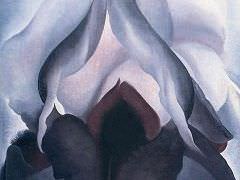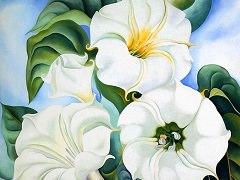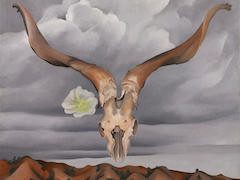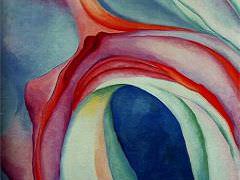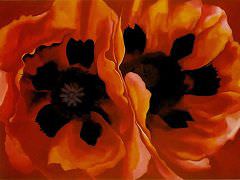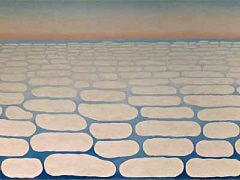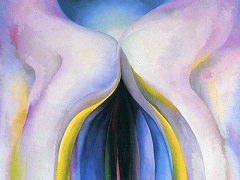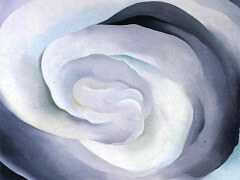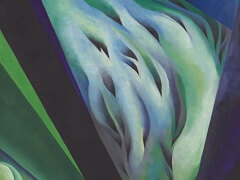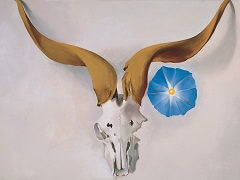Red Canna, 1924 by Georgia O'Keeffe
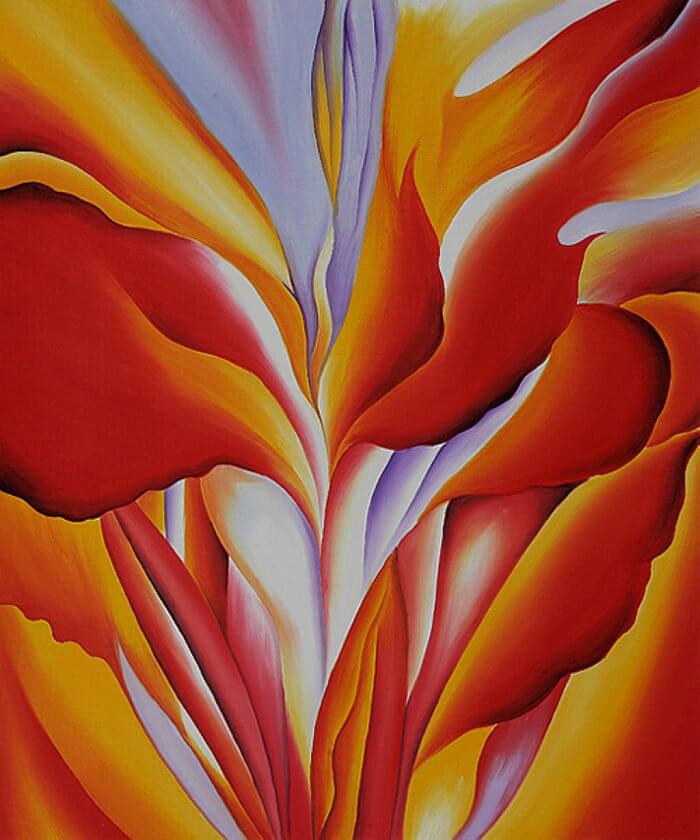
With Red Canna, Georgia O'keeffe continued the tendency to distill abstract patterns from natural sources, but now vastly enlarging the fragment of the blossom to fill the thirty-six-inch canvas. The enlargement of motif coincided with her Bing Trees and magnified leaves, also begun in 1924, and, like the latter, her large flowers were drawn from close-up study of natural forms. The restrained brushwork is typical of O'Keeffe's handling of oils, creating peculiarly smoothed shapes and subtle spatial ambiguities in her graded passages from intense tones to pearly whites. As the shapes swell and taper across the plane, they pulse with color and energy, suggesting the artist's continuing fascination with themes of natural vitality, translated to the microcosm of the blossom. Despite the apparent dissimilarity in subject, the floral enlargements provided and analogue to the forces of nature O'Keeffe had previously examined and are thematically related to her abstractions, her Texas skycaps, and her Lake George panoramas.
After Stieglitz passed away in 1946, O'Keeffe moved to Abiquiu, New Mexico, where she designed an expansive adobe house with a walled garden that included fruit trees, vegetables, and herbs, as well as flowers (she planted bulbs of black irises but they never bloomed.). She painted poppies, hollyhocks and copper roses but her greater interest lay in painting the golden landscape and her mysterious patio door. When O'Keeffe died in 1986, she had been unable to paint for more than a decade due to macular degeneration.
Flowers, however, remain the subject of her best-known and most desirable paintings.

